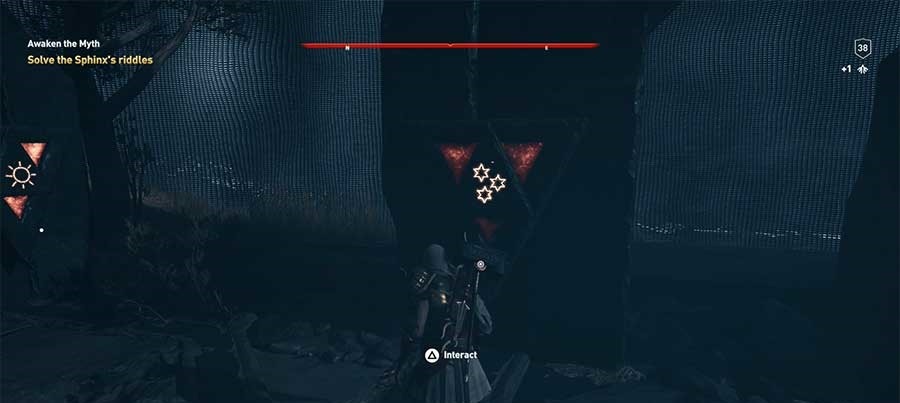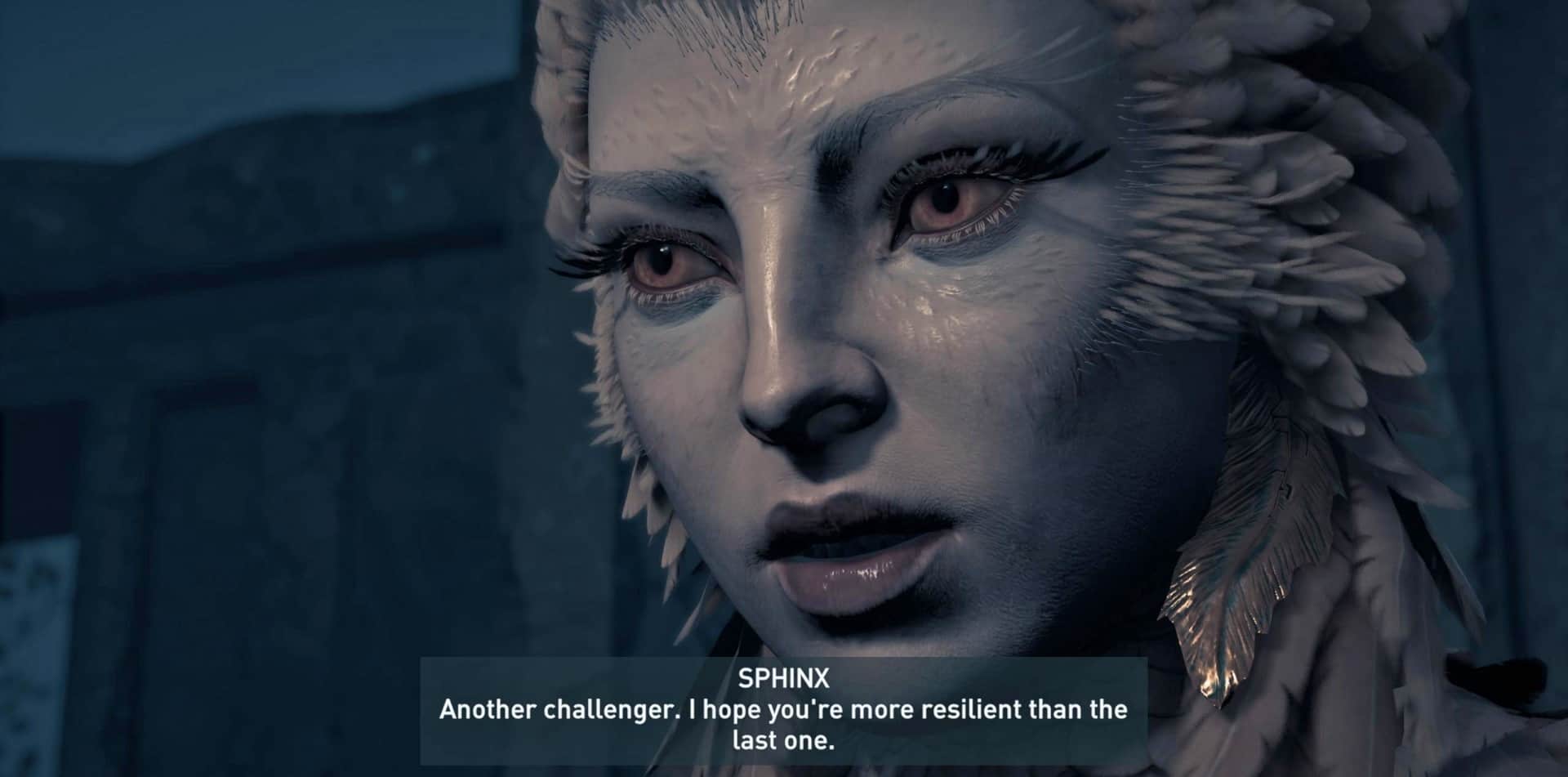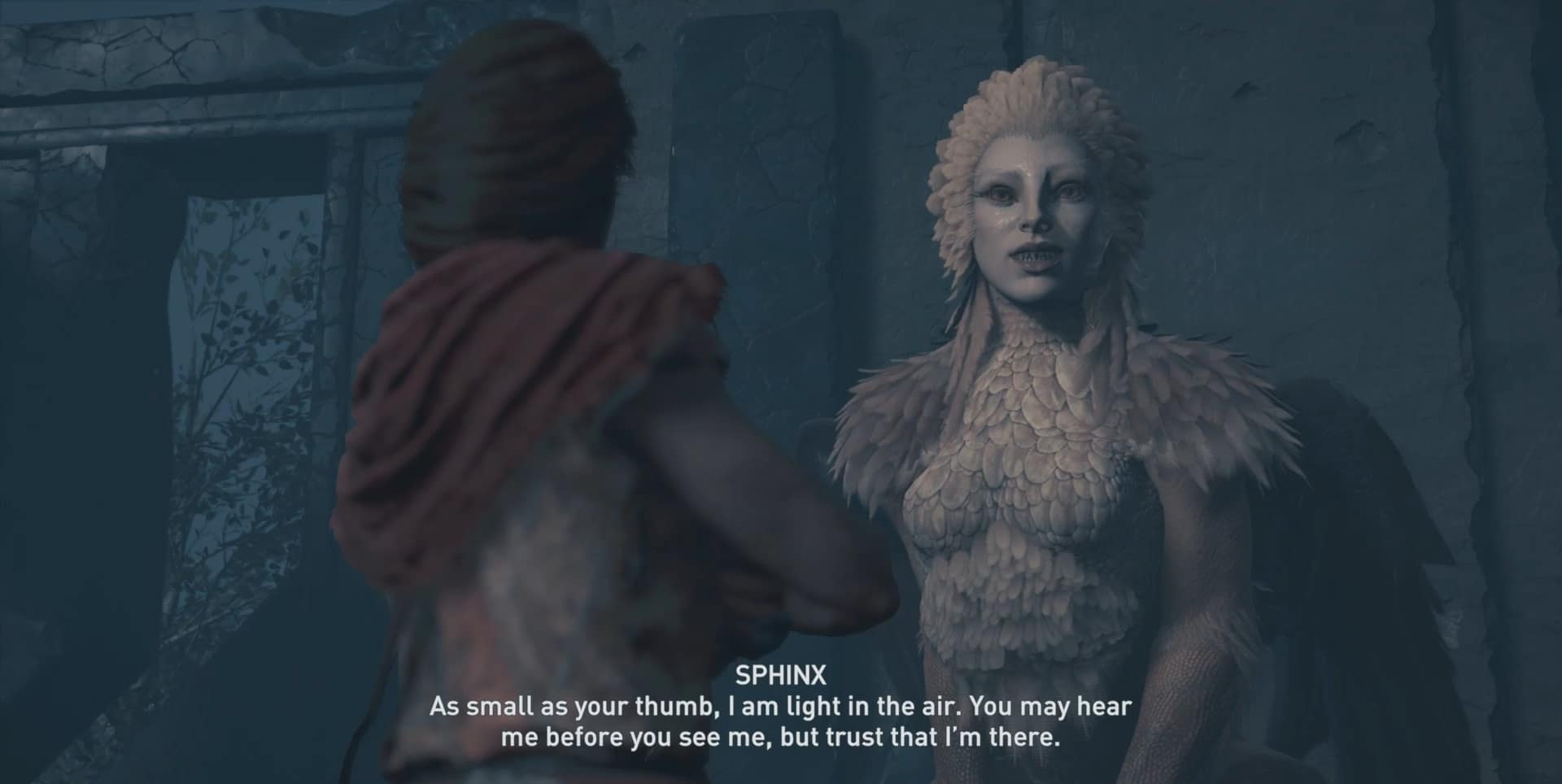When you hear “sphinx,” you probably think of the enormous one outside the pyramids of Giza. It’s true that the sphinx originally was an Egyptian myth, but the creature is prominent in Greek stories as well. Late in Assassin’s Creed: Odyssey’s main questline, you’ll come face to face with the legendary beast—and it won’t end well for you if you aren’t prepared.
Brains Over Brawn
There are several epic boss battles in AC: Odyssey and most of them involve going toe-to-toe with some of the most intimidating monsters in Greek lore. But the Sphinx—a sadistic bird-lion-snake-woman—will test your puzzle-solving acumen rather than your muscles and reflexes. Granted, her riddles are pretty simple, but maybe you just don’t like riddles.

Not to worry—that’s what we’re here for. Follow our step-by-step guide to collect the Piece of Eden the Sphinx is guarding and continue on with your Odyssey.
Unlocking the Quest and Finding the Sphinx
The Sphinx quest is a main story quest, but it kind of feels like a side quest and it’s not marked on your map as clearly as most other quests are, so it’s easy to miss. Once you’ve completed the quest “A Family’s Legacy,” the old man (no spoilers) will give you the Lore of the Sphinx quest and part of a strange medallion.
You’re headed to Boeotia to talk to a guy named Gorgias who hangs out in “strange ruins.” More specifically, you’re headed to the southern part of the Lake Kopais region. Once you’re in the area, the ruins are pretty easy to spot—just look for the giant Isu structures that don’t look anything like most of the other architecture you’ve seen so far.
The Sphinx’s temple is always covered in heavy fog, no matter the time of day or weather conditions elsewhere. Look around in the mist for Gorgias. The temple grounds aren’t that big, so he shouldn’t be too hard to find.
Find the Missing Apprentice
Gorgias has a student named Pibos who was helping him investigate the Sphinx’s temple, and Pibos had the other half of the Sphinx medallion. He was last seen at the Tomb of Menoikeus, which is in the northeast part of the Scorched Rolling Plains, so head that way.

You’ll find the body of poor Pibos alongside a dead cow. It appears that some kind of large animal killed them both, and presumably ate the medallion part that you’re looking for. (That last part is anything but obvious to us, but whatever.) Track the animal and you’ll discover that it’s an Alpha lion. Kill it, reclaim the missing half of the medallion, and return to Gorgias at the temple.
Challenge the Sphinx
There’s just one problem: Gorgias is gone, as is the Sphinx statue that used to be in the temple. In its place is the legendary beast herself, looking pleased as a cat who’s just caught a mouse. No need to draw your weapons (but you will totally die if you get this part wrong, so don’t relax too much.)
The Sphinx will ask you three riddles, selected randomly from a set of twelve. Answer all three correctly and you’ll leave with your life (and the missing half of the medallion). Get any of them wrong and it’s back to the last checkpoint.
Here are all twelve questions and their correct answers:
What can run, but never walks; has a mouth, but never talks; has a head, but never weeps; has a bed, but never sleeps?
Answer: River
What can bring back the dead; make you cry, make you laugh, make you young; is born in an instant, yet lasts a lifetime.
Answer: Memory
Never resting, never still; moving silently from hill to hill; it does not walk, run or trot; all is cool where it is not.
Answer: Sun

I’m alive, but without breath; I’m as cold in life as in death; I’m never thirsty, though I always drink.
Answer: Fish
What is always old and sometimes new; never sad, sometimes blue; never empty, but sometimes full; never pushes, always pulls?
Answer: Moon
What is large, yet never grows; has roots that cannot be seen; and is taller than trees?
Answer: Mountain
At night they come without being fetched, and by day they are lost without being stolen.
Answer: Stars
I create my lair with earthen string, and dispatch my prey with a biting sting.
Answer: Spider
This thing all things devour: birds, beasts, trees, flowers; gnaws iron, bites steel; grinds hard stones to meal.
Answer: Time

As small as your thumb, I am light in the air. You may hear me before you see me, but trust that I’m here.
Answer: Hummingbird
In spring I am gay in handsome array; in summer more clothing I wear; when colder it grows, I fling off my clothes; and in winter quite naked appear.
Answer: Tree
Some try to hide, some try to cheat; but time will show, we always will meet. Try as you might to guess my name.
Answer: Death
Once you correctly answer all three riddles, you’re not quite done yet. To finish the quest, you’ll have to press three switches that correspond to the answers you gave. There are twelve such buttons around the outer edges of the temple that have glowing runes on them.
It should be pretty clear which symbol is which; most of them are spot-on drawings of the thing in question, and the few that are more abstract are dissimilar enough that you should be able to tell them apart. Input your three choices and watch the Sphinx die of shame.
Conclusion
That wasn’t so hard, right? Honestly, if those riddles were the best the Sphinx could come up with, we’re surprised some random guy who occasionally does crosswords didn’t accidentally kill her and make off with the artifact a long time ago.
Need some help with the other legendary monster encounters in Assassin’s Creed: Odyssey? We just so happen to have in-depth guides for Medusa, Cyclops, and the Minotaur, so check them out if you’re stuck.
If you still haven’t made it to this part of the game though, why not take a look at important choices in Assassin’s Creed: Odyssey to better influence the ending you get.